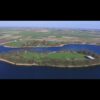Sans-Souci Palace
Sans-Souci Palace
Sans-Souci Palace San Souci low resolution. Milot, Nord Department, Haiti The ruins of Sans Souci Palace, built in 1810-13 by Haiti's King Henri I. In the northern part of Haiti, the National History Park – Citadel, Sans-Souci, Ramiers (NHP-CSSR) is located in the central zone of the northern massif that extends to the Dominican Republic. The NHP-CSSR is located between the coastal plains and the mountainous interior of the region. The choice to build the Citadel on the summits responded to a strategy for interior protection, differing from the coastal defence strategy inherited from French colonization.Created by presidential decree in 1978, to preserve the splendid natural scenery of the mountainous peaks covered with luxuriant vegetation, the NHP-CSSR covers an area of 25 km2. It includes the monumental ensemble of the Palace of Sans-Souci and its annex buildings, the Citadelle Henry and the Ramiers site, universal symbols of liberty, being the first monuments to be constructed by black slaves who had gained their freedom. For Haitians, they represent the first monuments of their independence.On 1 January 1804, after fourteen years of struggle by the island’s black slaves against the colonists, Jean-Jacques Dessalines, the principal leader of the revolution, proclaimed the independent Republic of Haiti. The “Emperor” Dessalines immediately entrusted to one of his generals, Henri Christophe, the task of constructing an immense fortress on the Pic Laferrière, to protect the young republic.Both military installation and political manifesto, the Citadelle Henry, constructed to a height of 970 m, is one of the best examples of the art of military engineering of the early 19th century. The plans are the work of the Haitian Henry Barré, but it is probable that General Christophe played the preponderant role in their formulation. whc.unesco.org
Henry Tenenbaum

